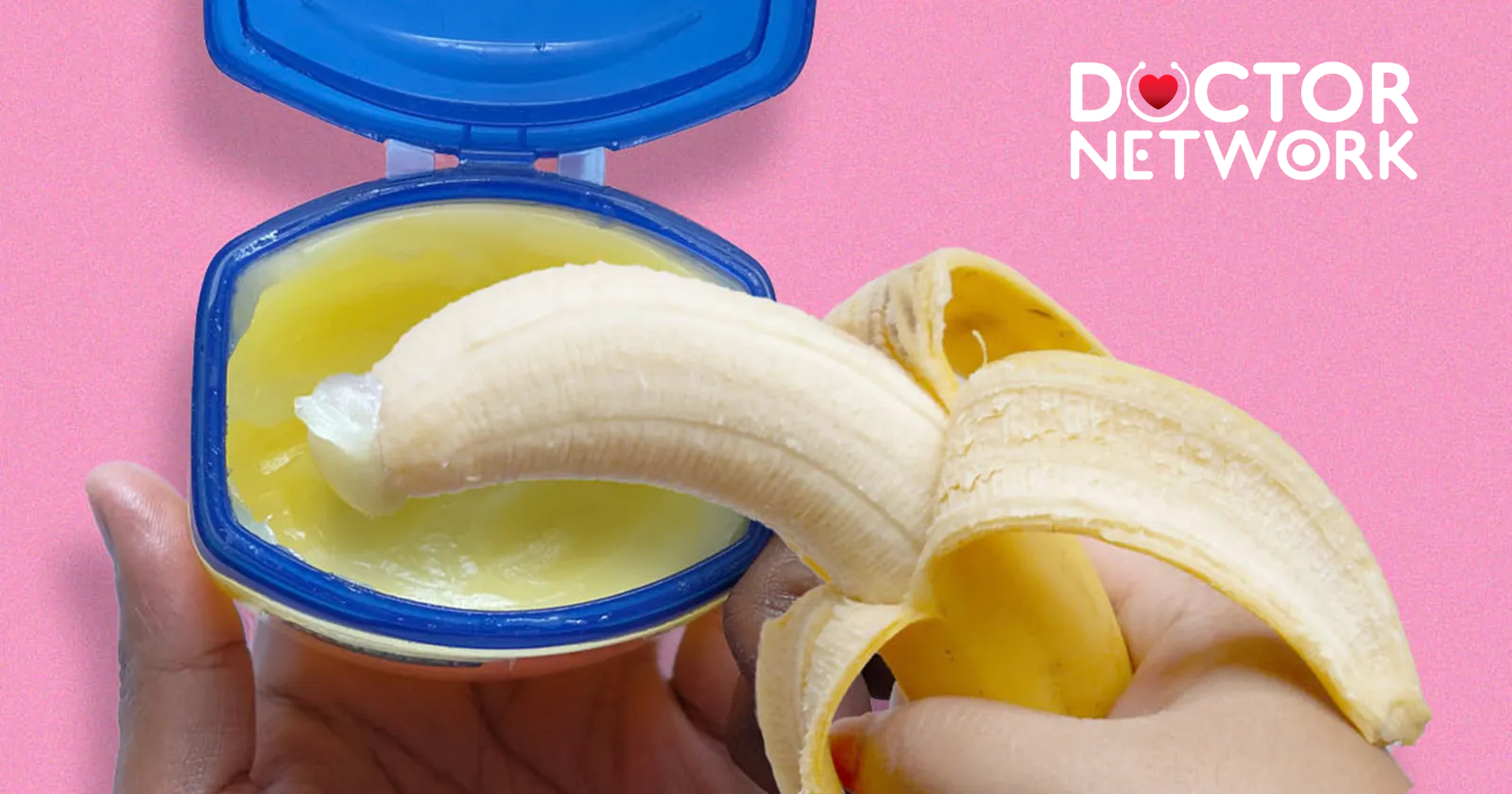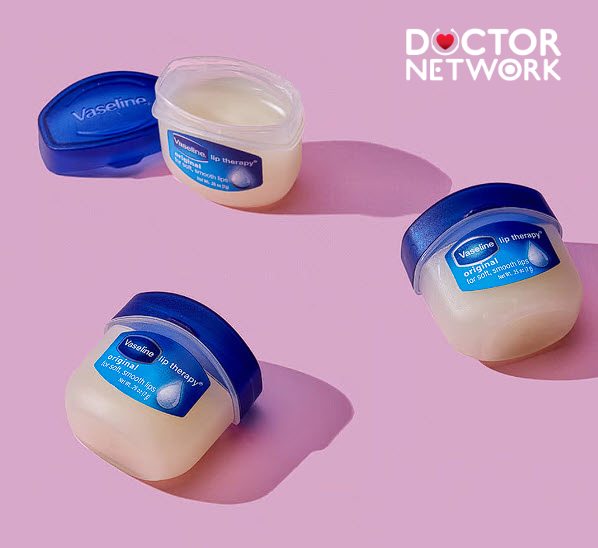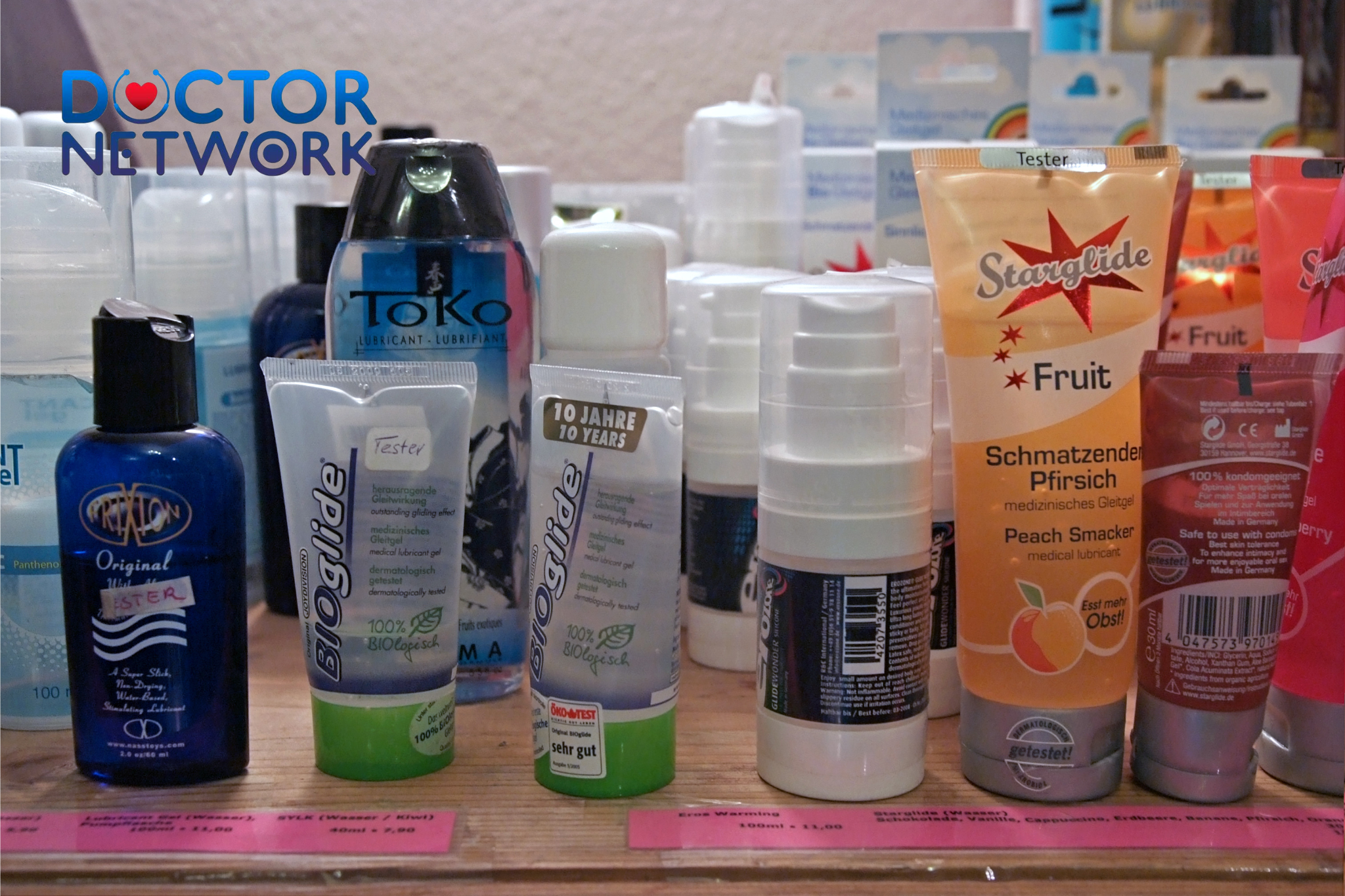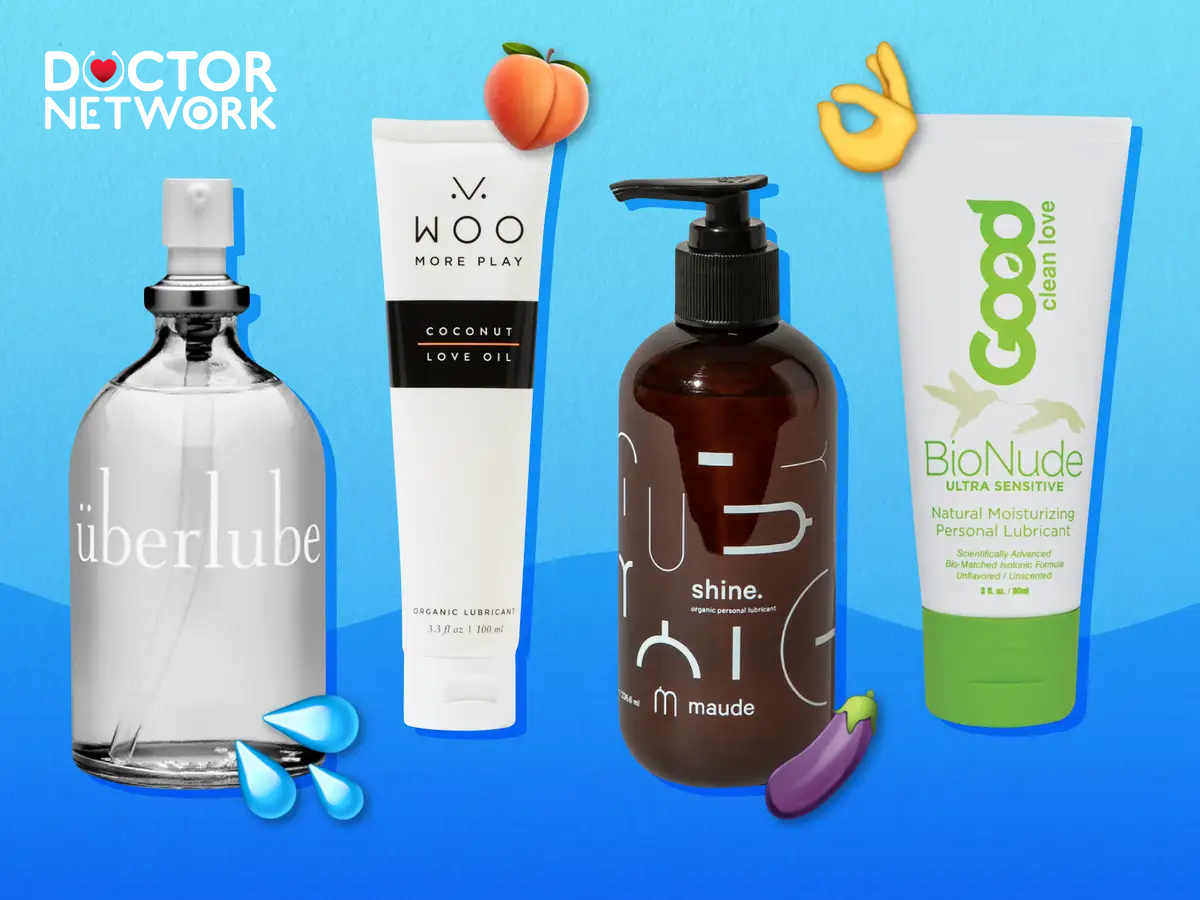“Can Vaseline be used as A Personal Lubricant?” Risks & Safe Alternatives
Thinking of using Vaseline as lube? Discover the health risks, condom concerns, and safer alternatives recommended by medical experts.

Using Vaseline Be Used as a Personal Lubricant?
Can Vaseline be used as a personal lubricant? This question surfaces frequently among individuals seeking accessible intimate care solutions, given petroleum jelly’s widespread availability and reputation as a trusted skin moisturizer. While this petroleum-based product effectively protects and hydrates external skin, using Vaseline as intimate lubrication poses significant health risks that far outweigh any perceived convenience or cost savings.
Understanding proper lubrication choices directly impacts sexual wellness, reproductive health, and overall intimate comfort. This comprehensive guide examines why medical professionals consistently advise against using petroleum jelly for intimate purposes, explores the specific health hazards involved, and provides evidence-based alternatives that prioritize both safety and satisfaction.
We’ll cover the fundamental composition of petroleum jelly, delve into infection risks and contraceptive compatibility issues, address common misconceptions, and present professionally recommended lubricant options. By understanding these critical distinctions, you can make informed decisions that protect your sexual health while maintaining intimate comfort and pleasure.
What Exactly Is Vaseline (Petroleum Jelly)?

This is Vaseline
Vaseline consists of refined petroleum hydrocarbons that create an occlusive barrier on skin surfaces. This petroleum-derived substance, also known as petrolatum or mineral jelly, undergoes extensive purification processes to remove impurities and achieve its characteristically smooth, colorless consistency.
The hydrocarbon mixture forms a semi-solid emollient that prevents moisture loss by creating a non-porous film over treated areas. This barrier function makes petroleum jelly exceptionally effective for treating dry skin conditions, protecting minor cuts and scrapes, and preventing chafing in various medical and cosmetic applications.
Healthcare providers frequently recommend petroleum jelly for external skin conditions including eczema, dermatitis, and minor wound care. Its inert chemical properties mean it rarely causes allergic reactions on intact skin surfaces, contributing to its reputation as a gentle, hypoallergenic moisturizing agent.
However, these same occlusive properties that benefit external skin care create problematic conditions when applied to intimate areas. The thick, impermeable layer that protects dry skin becomes a potential health hazard in the delicate, moisture-balanced environment of genital tissues.
Understanding Personal Lubricants

This is Personal Lubricants
Personal lubricants are specifically formulated products designed to reduce friction and enhance comfort during intimate activities. These specialized formulations undergo rigorous testing to ensure compatibility with human mucous membranes, maintaining appropriate pH levels and osmolality that support healthy intimate environments.
Medical-grade intimate lubricants fall into four primary categories, each offering distinct advantages for different situations and preferences:
Lubricant Categories and Applications
| Lubricant Type | Primary Ingredients | Best Uses | Compatibility |
|---|---|---|---|
| Water-based | Glycerin, cellulose derivatives | General use, toy-friendly | All condoms, most toys |
| Silicone-based | Dimethicone, cyclopentasiloxane | Long-lasting, waterproof | Latex/non-latex condoms |
| Hybrid | Water and silicone blend | Extended comfort | Most condoms and toys |
| Oil-based | Natural/synthetic oils | Massage, non-barrier use | Non-latex condoms only |
Professional formulations consider multiple factors including viscosity, longevity, pH balance, and osmolality to ensure products enhance rather than compromise intimate health. Quality lubricants maintain physiological compatibility while providing the slip and comfort necessary for pleasurable intimate experiences.
Contraceptive compatibility represents a crucial consideration when selecting intimate lubricants. Many products undergo specific testing to verify they won’t compromise barrier method effectiveness, ensuring users can maintain both comfort and protection simultaneously.
The Direct Answer: Is Vaseline Safe/Recommended for Intimate Use?
No, petroleum jelly is not recommended for use as personal lubricant due to significant health and safety risks. Despite its “pure” labeling and hypoallergenic reputation for external skin care, Vaseline’s chemical and physical properties make it unsuitable and potentially harmful for intimate applications.
Medical professionals, including gynecologists, urologists, and sexual health specialists, consistently advise against using petroleum-based products for intimate lubrication. This recommendation stems from extensive clinical evidence demonstrating increased infection rates, contraceptive failure, and tissue irritation among individuals who use petroleum jelly for intimate purposes.
The fundamental issue lies in petroleum jelly’s occlusive nature and chemical incompatibility with both human physiology and barrier contraceptives. While effective for protecting external skin from environmental factors, these same properties create problematic conditions when introduced to the carefully balanced intimate environment.
Even small amounts of petroleum jelly can disrupt normal physiological processes and compromise safety measures, making it an inappropriate choice regardless of perceived convenience or familiarity with the product for other uses.
Why Vaseline is NOT Recommended: The Significant Risks and Drawbacks
Petroleum jelly creates multiple health hazards when used as intimate lubrication, ranging from increased infection susceptibility to contraceptive failure. These risks stem from fundamental incompatibilities between petroleum-based products and the delicate physiological balance required for optimal intimate health.
4.1 Increased Risk of Infections
The occlusive barrier created by petroleum jelly traps bacteria, moisture, and pathogens against sensitive mucosal tissues. This environment promotes bacterial overgrowth and disrupts the natural self-cleaning mechanisms that maintain healthy intimate flora.
Clinical studies demonstrate significantly elevated rates of bacterial vaginosis (BV) and vulvovaginal candidiasis (yeast infections) among women who regularly use petroleum-based products for intimate purposes. The trapped moisture and altered oxygen levels create ideal conditions for pathogenic microorganism proliferation.
Petroleum jelly also disrupts the natural pH balance of vaginal tissues, which typically maintains an acidic environment (pH 3.8-4.5) that inhibits harmful bacterial growth. This pH disruption compromises the protective Lactobacillus bacteria population, leaving tissues vulnerable to opportunistic infections.
The prolonged contact time associated with petroleum jelly’s persistence on tissues extends exposure to these altered conditions, increasing both infection likelihood and severity when problems develop.
4.2 Critical Incompatibility with Condoms
Oil-based products including petroleum jelly cause rapid deterioration of latex condoms, compromising their structural integrity within minutes of contact. Laboratory testing demonstrates that petroleum-based substances can reduce latex strength by up to 90% within 15 minutes of application.
This degradation occurs through chemical interaction between petroleum hydrocarbons and natural rubber latex, causing microscopic pores and eventual material failure. The compromised barrier significantly increases risks of both sexually transmitted infection (STI) transmission and unintended pregnancy.
Condom Compatibility Chart
| Lubricant Base | Latex Condoms | Polyurethane Condoms | Polyisoprene Condoms |
|---|---|---|---|
| Water-based | ✅ Safe | ✅ Safe | ✅ Safe |
| Silicone-based | ✅ Safe | ✅ Safe | ✅ Safe |
| Oil-based (Vaseline) | ❌ Dangerous | ⚠️ Check manufacturer | ⚠️ Check manufacturer |
| Hybrid | ✅ Safe | ✅ Safe | ✅ Safe |
While non-latex condoms (polyurethane, polyisoprene) show greater resistance to oil-based products, manufacturer guidelines should always be consulted, as compatibility varies between brands and formulations.
4.3 Potential for Irritation and Discomfort
Prolonged petroleum jelly exposure can cause inflammation and irritation in sensitive mucosal tissues. The occlusive nature prevents normal tissue respiration and interferes with natural moisture regulation, leading to tissue maceration and increased sensitivity.
Many individuals experience burning sensations, itching, or persistent discomfort following petroleum jelly use in intimate areas. These symptoms may develop gradually, making the connection to petroleum jelly use less obvious initially.
The product’s tendency to accumulate in tissue folds and crevices can create localized irritation points where concentrated exposure occurs. This buildup effect intensifies over time with repeated use, potentially leading to chronic inflammatory conditions.
4.4 Practical Drawbacks: Difficulty Cleaning
Petroleum jelly’s water-resistant properties make thorough removal challenging, leaving persistent residue that can harbor bacteria and cause ongoing irritation. Unlike water-based alternatives that rinse away easily, petroleum-based products require vigorous cleansing with soap or detergent to achieve complete removal.
This removal difficulty extends beyond personal hygiene to practical considerations including stained clothing, bedding, and lingerie. The greasy residue can permanently mark fabrics and create unsanitary conditions that promote bacterial growth in textile fibers.
The persistence of petroleum residue also interferes with subsequent intimate activities, as accumulated product can cause discomfort and reduce sensitivity over time.
4.5 Specific Risks Based on Use Area
Vaginal application of petroleum jelly poses the highest infection risk due to the complex microbial ecosystem that maintains vaginal health. The disruption of beneficial bacteria populations can trigger cascade effects including recurrent infections and chronic inflammatory conditions.
Anal application presents additional concerns due to the increased delicacy of rectal tissues and higher bacterial load in the area. The anal sphincter’s structure can trap petroleum jelly, creating prolonged exposure that increases tissue damage and infection risk.
Rectal tissues lack the self-cleaning mechanisms present in vaginal areas, making bacterial accumulation and subsequent infection more likely when occlusive products are used.
Addressing Common Misconceptions
Many individuals justify petroleum jelly use with rationales like “I only use a small amount” or “it feels better than nothing,” but even minimal quantities can pose significant health risks. The occlusive properties that create problems don’t diminish proportionally with smaller amounts—even thin applications can disrupt normal physiological processes.
The “it’s cheaper” argument fails to account for potential medical costs associated with treating infections, contraceptive failures, or chronic irritation conditions that may result from petroleum jelly use. Quality personal lubricants, while initially more expensive, provide superior safety profiles that protect long-term health and prevent costly complications.
Some users report that petroleum jelly “feels good” initially, but this temporary sensation doesn’t justify the substantial health risks involved. Purpose-made lubricants provide superior comfort without compromising safety or requiring concerning trade-offs.
The misconception that “natural” or “pure” products are automatically safer for intimate use overlooks the critical importance of formulation specificity. Products designed for external skin care aren’t automatically suitable for internal or intimate applications, regardless of their purity or reputation.
Safe and Recommended Alternatives

Recommended Lubricants
Medical professionals consistently recommend using lubricants specifically formulated and tested for intimate use rather than improvised alternatives. These products undergo extensive safety testing, pH optimization, and compatibility verification to ensure they enhance rather than compromise intimate health.
6.1 Water-Based Lubricants
Water-based formulations offer the safest option for most users, providing universal compatibility with condoms and intimate accessories. These products typically contain purified water, glycerin or glycol derivatives, and cellulose-based thickening agents that create appropriate viscosity without compromising tissue health.
Advantages of water-based lubricants:
- Complete compatibility with all condom types
- Easy cleanup with water
- Safe for use with silicone and rubber intimate accessories
- Wide availability and variety of formulations
- Generally hypoallergenic and gentle on sensitive tissues
Potential limitations:
- May require reapplication during extended activities
- Can become sticky if not refreshed periodically
- Some formulations may cause dryness with frequent use
6.2 Silicone-Based Lubricants
Silicone-based formulations provide exceptional longevity and maintain their lubricating properties even in aquatic environments. These products use medical-grade silicones including dimethicone and cyclopentasiloxane that create smooth, long-lasting lubrication without absorbing into tissues.
Benefits of silicone-based options:
- Extended duration without reapplication
- Waterproof properties ideal for shower or bath activities
- Excellent glide characteristics
- Compatible with latex and non-latex condoms
- Hypoallergenic formulations suitable for sensitive individuals
Considerations:
- More challenging to clean than water-based alternatives
- Incompatible with silicone intimate accessories (can cause material degradation)
- Higher initial cost than water-based options
6.3 Hybrid Lubricants
Hybrid formulations combine water and silicone bases to provide balanced performance characteristics. These innovative products attempt to capture the easy cleanup of water-based lubricants with the longevity of silicone-based alternatives.
Hybrid lubricant advantages:
- Moderate longevity with reasonable cleanup requirements
- Broad compatibility with condoms and most accessories
- Balanced viscosity and feel
- Often suitable for individuals who find single-base formulations inadequate
Performance and characteristics can vary significantly between manufacturers, making individual testing important to find suitable options.
Comparative Analysis: Petroleum Jelly vs. Recommended Lubricants
| Factor | Petroleum Jelly | Water-Based | Silicone-Based | Hybrid |
|---|---|---|---|---|
| Safety Profile | High risk | Excellent | Excellent | Very good |
| Condom Compatibility | Dangerous | Perfect | Perfect | Excellent |
| Infection Risk | Elevated | Minimal | Minimal | Low |
| Cleanup Ease | Difficult | Easy | Moderate | Easy |
| Duration | Long | Short-Medium | Long | Medium-Long |
| Cost (Initial) | Low | Low-Medium | Medium-High | Medium |
| Health Cost | Potentially high | Minimal | Minimal | Minimal |
The comparison clearly demonstrates that while petroleum jelly may appear cost-effective initially, the health risks and potential medical expenses make purpose-made lubricants the more economical choice long-term.
When in Doubt: Consulting a Professional
Healthcare providers including gynecologists, urologists, and sexual health educators can provide personalized recommendations based on individual health profiles and specific needs. These professionals understand the nuances of intimate health and can suggest appropriate products while addressing any underlying conditions that might influence lubricant selection.
Consultation becomes particularly important for individuals with recurrent infections, chronic irritation, or specific medical conditions that might affect intimate product tolerance. Healthcare providers can also identify potential interactions between personal care products and prescribed medications.
Sexual health educators and certified sexuality counselors offer additional expertise in matching lubricant characteristics to specific activities and preferences while maintaining safety priorities.
Seek professional guidance if experiencing:
- Recurrent vaginal or urinary tract infections
- Persistent irritation or discomfort during intimate activities
- Allergic reactions to commercial lubricants
- Concerns about product compatibility with medical devices or medications
- Questions about intimate health maintenance
Prioritize Your Sexual Health with Safe Lubricant Choices
While petroleum jelly serves valuable purposes for external skin care, it is definitively not suitable or safe for use as personal lubricant due to serious infection risks, contraceptive compatibility issues, and practical complications. The medical evidence consistently demonstrates that petroleum-based products create more problems than they solve when used for intimate purposes.
The availability of professionally formulated water-based, silicone-based, and hybrid lubricants eliminates any justification for using inappropriate alternatives. These purpose-made products provide superior safety profiles, better performance characteristics, and greater overall satisfaction without compromising health or contraceptive effectiveness.
Prioritizing sexual health means choosing appropriate products designed specifically for intimate use. The minimal additional cost of proper lubricants pales in comparison to the potential medical expenses, discomfort, and health complications associated with using petroleum-based alternatives. Your intimate wellness deserves the same careful consideration and quality products you would choose for any other aspect of your health care routine.
5 Frequently Asked Questions About Using Vaseline as a Personal Lubricant
1. Can I use Vaseline as a sexual lubricant?
No, Vaseline (petroleum jelly) is not recommended as a sexual lubricant. It is designed for external use only and is not meant to be used inside the body. Using it vaginally or anally can trap bacteria and increase the risk of infections like bacterial vaginosis or yeast infections.
2. Is Vaseline safe to use with condoms?
No, Vaseline is oil-based and can degrade latex and polyurethane condoms, causing them to weaken or break. This significantly increases the risk of unintended pregnancy and sexually transmitted infections (STIs). Therefore, Vaseline should never be used with latex condoms.
3. Does Vaseline increase the risk of infections?
Yes. Because Vaseline is thick and does not wash away easily, it can trap bacteria and disrupt the natural pH balance, especially in the vagina. Studies show women using petroleum jelly vaginally are more likely to develop bacterial vaginosis.
4. What are the cleanup issues with Vaseline as a lubricant?
Vaseline is difficult to wash off with water alone and can leave greasy stains on skin, clothing, and bedding. Removing it often requires soap, which can irritate sensitive skin and further increase infection risk.
5. What are safer alternatives to Vaseline for lubrication?
Water-based and silicone-based lubricants are safer and more effective. They are compatible with condoms, easier to clean, and less likely to cause irritation or infections. Glycol-based lubricants are also used but may dry out quickly or cause yeast infections in some people.
References
Brown, J. M., Hess, K. L., Brown, S., Murphy, C., Waldman, A. L., & Ravel, J. (2013). Intravaginal practices and risk of bacterial vaginosis and other urogenital infections in women: a systematic review and meta-analysis. PLoS One, 8(2), e56029. https://doi.org/10.1371/journal.pone.0056029
Voeller, B., Coulson, A. H., Bernstein, G. S., & Nakamura, R. M. (1989). Mineral oil lubricants cause rapid deterioration of latex condoms. Contraception, 39(2), 95-102. https://doi.org/10.1016/0010-7824(89)90018-7
Centers for Disease Control and Prevention. (n.d.). Condom Effectiveness. Male Condom Use. Retrieved from https://www.cdc.gov/condomeffectiveness/male-condom-use.html
Mayo Clinic Staff. (n.d.). Personal lubricants: Options and considerations. Mayo Clinic. Retrieved from https://www.mayoclinic.org/healthy-lifestyle/sexual-health/in-depth/personal-lubricants/art-20047824
National Health Service. (n.d.). What Gels and Lubricants are Safe to Use With Condoms? NHS. Retrieved from https://www.nhs.uk/common-health-questions/sexual-health/what-gels-and-lubricants-are-safe-to-use-with-condoms/
Kiểm Duyệt Nội Dung
More than 10 years of marketing communications experience in the medical and health field.
Successfully deployed marketing communication activities, content development and social networking channels for hospital partners, clinics, doctors and medical professionals across the country.
More than 6 years of experience in organizing and producing leading prestigious medical programs in Vietnam, in collaboration with Ho Chi Minh City Television (HTV). Typical programs include Nhật Ký Blouse Trắng, Bác Sĩ Nói Gì, Alo Bác Sĩ Nghe, Nhật Ký Hạnh Phúc, Vui Khỏe Cùng Con, Bác Sỹ Mẹ, v.v.
Comprehensive cooperation with hundreds of hospitals and clinics, thousands of doctors and medical experts to join hands in building a medical content and service platform on the Doctor Network application.

























